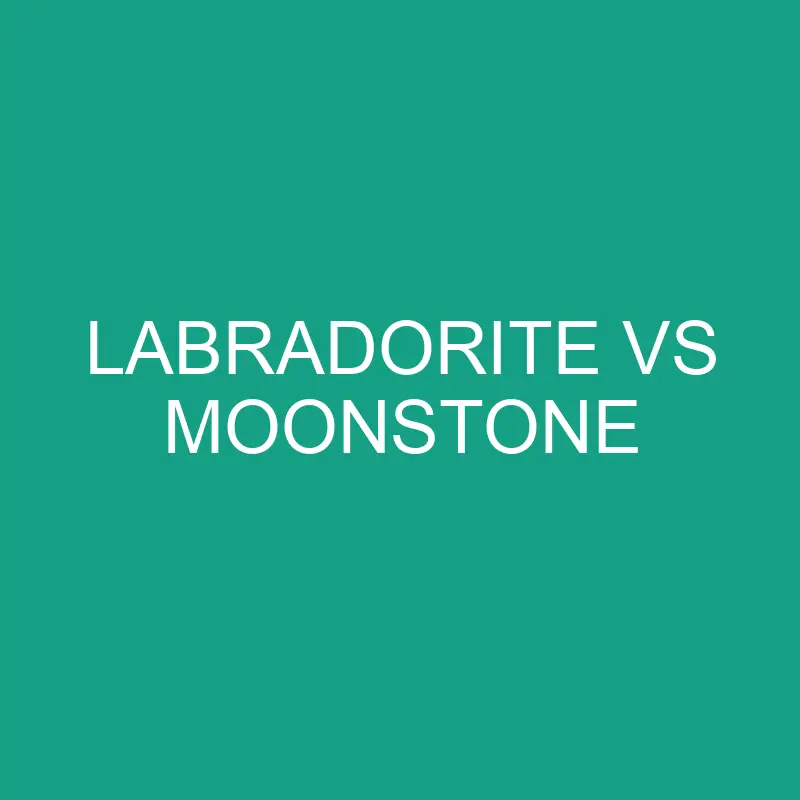Gemstones have captivated humanity for centuries, not only for their beauty but also for the mystical qualities and symbolism attributed to them. Labradorite and moonstone, both members of the feldspar mineral group, share a captivating characteristic: adularescence. This phenomenon gives these stones a unique iridescence, a play of colors that seems to dance across the surface. In this exploration, we will delve into the distinct features, origins, and metaphysical properties of Labradorite and Moonstone, shedding light on these enchanting gems.
Post Contents
Labradorite: The Stone of Transformation
Origins and Geological Background:
- Composition: Labradorite is a feldspar mineral and belongs to the plagioclase series. It is composed of sodium, calcium, aluminum, silicon, and oxygen.
- Color: Labradorite exhibits a dark base color, often gray-green or black, with iridescent flashes of blue, green, yellow, and gold.
- Formation: Labradorite is typically found in igneous rocks such as basalt and gabbro and forms as a result of the cooling of molten rock.
Physical Properties:
- Color and Appearance: Labradorite’s distinctive feature is its labradorescence—an optical effect that produces a play of colors.
- Transparency: Transparent to translucent.
- Crystal Structure: It belongs to the triclinic crystal system.
- Hardness: Labradorite has a hardness of 6-6.5 on the Mohs scale.
Origins and Mining:
- Locations: Labradorite is found in various locations, including Canada, Madagascar, Norway, and Russia.
- Mining: Labradorite is extracted through traditional mining methods from its primary source rocks.
Metaphysical Properties:
- Transformation and Protection: Labradorite is associated with transformation and is believed to enhance intuition and psychic abilities.
- Aura Cleansing: It is thought to have protective qualities and is used in metaphysical practices for aura cleansing.
Uses in Jewelry and Art:
- Jewelry: Labradorite’s unique iridescence makes it a popular choice for jewelry, including rings, necklaces, and earrings.
- Carvings and Sculptures: It is also used for carved figurines and sculptures, often showcasing the play of colors.
Moonstone: The Stone of Feminine Energy
Origins and Geological Background:
- Composition: Moonstone is another member of the feldspar group, typically belonging to the orthoclase or oligoclase varieties.
- Color: Moonstone is known for its milky appearance with a blue or rainbow-like adularescence.
- Formation: Moonstone is often found in granitic rocks and forms as a result of the cooling of magma.
Physical Properties:
- Color and Appearance: Moonstone’s most notable feature is its adularescence, which gives it a glowing or floating appearance on its surface.
- Transparency: Transparent to translucent.
- Crystal Structure: It belongs to the monoclinic crystal system.
- Hardness: Moonstone has a hardness of 6-6.5 on the Mohs scale.
Origins and Mining:
- Locations: Moonstone is found in several countries, with significant deposits in India, Sri Lanka, Madagascar, and the United States.
- Mining: Extracted through traditional mining methods, moonstone is often found in association with other minerals.
Metaphysical Properties:
- Feminine Energy: Moonstone is often associated with feminine energy and is believed to enhance intuition and psychic abilities.
- Emotional Balance: It is thought to bring emotional balance and soothe stress.
Uses in Jewelry and Art:
- Jewelry: Moonstone’s captivating adularescence makes it a popular choice for various types of jewelry, from rings to pendants.
- Carvings and Beads: Moonstone is also carved into beads and ornamental carvings, taking advantage of its unique optical properties.
Comparative Analysis: Labradorite vs. Moonstone
Color and Appearance:
- Labradorite: Dark base color with iridescent flashes of blue, green, yellow, and gold (labradorescence).
- Moonstone: Milky appearance with a floating blue or rainbow-like adularescence.
Transparency:
- Labradorite: Transparent to translucent.
- Moonstone: Transparent to translucent.
Crystal Structure:
- Labradorite: Triclinic crystal system.
- Moonstone: Monoclinic crystal system.
Hardness (Mohs Scale):
- Labradorite: 6-6.5.
- Moonstone: 6-6.5.
Origins and Mining:
- Labradorite: Found in various locations, including Canada, Madagascar, Norway, and Russia. Extracted through traditional mining methods.
- Moonstone: Found in India, Sri Lanka, Madagascar, and the United States. Extracted through traditional mining methods.
Metaphysical Properties:
- Labradorite: Associated with transformation, intuition, and protection.
- Moonstone: Associated with feminine energy, intuition, and emotional balance.
Uses in Jewelry and Art:
- Labradorite: Used in various types of jewelry, sculptures, and carvings.
- Moonstone: Popular in jewelry, including rings and pendants. Also used for beads and ornamental carvings.
Conclusion: Labradorite vs. Moonstone – A Dance of Colors
Labradorite and Moonstone, both members of the feldspar family, enchant admirers with their iridescent displays, transporting them into a realm of mystical beauty. Labradorite, with its dark base and vibrant flashes, is often associated with transformation and protection. Moonstone, with its milky appearance and ethereal glow, carries a sense of feminine energy and emotional balance.
Whether you’re drawn to the transformative energy of labradorite or the soothing qualities of moonstone, each gem has a unique charm that transcends mere aesthetics. As you explore the world of these iridescent gemstones, you may find yourself captivated not only by their physical beauty but also by the deeper meanings and energies they are believed to possess. Whether adorning yourself with a piece of jewelry or simply marveling at the beauty of these stones, labradorite and moonstone invite you to embark on a journey into the enchanting world of gemstones and their mystique.

